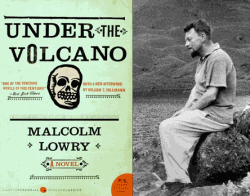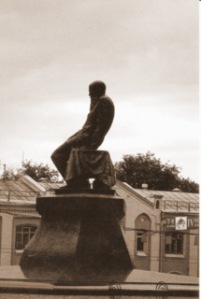Pulp auteur Jim Thompson has been getting a bit of media attention due to today’s release of a film adaptation of “The Killer Inside Me.” I haven’t seen the movie — and, based on some of the reviews, I may not — but I do want to say a thing or two about Thompson.
First off, he was amazing. Talking about the guy turns me into a total fanboy.
But it’s not Thompson’s stories that stand out. They are mainly procedural crime with lots of sex and violence (which can be fun, but isn’t all that unique). What makes him is his style and — dare I say it — his insight. Stephen King described him this way …
The guy was over the top. The guy was absolutely over the top. Big Jim didn’t know the meaning of the word stop. There are three brave lets inherent in the forgoing: he let himself see everything, he let himself write it down, then he let himself publish it.
Thompson didn’t write novels, he wrote excoriations of the human condition. They are hard to read at times, and often flawed in some significant ways, but the writing is always brilliant. And that just makes his vision that much more  horrifying.
horrifying.
There’s a great article about him at the Wall Street Journal in which Barry Gifford says, “He’s just too raw and too graphic for mainstream America.” (H.R.F. Keating put it a different way: “The great merit of the novels of Jim Thompson is that they are completely without good taste…”)
Interestingly, this is as true today as it was when Thompson was writing fifty years ago. While many edgy fictions from the same time period seem tame by today’s standards, Thompson is still controversial. Because of this, to my mind, Thompson is a precursor and predictor to writers like Bret Easton Ellis, who has also been getting media attention these days, and Chuck Palahniuk. But Thompson was way more fun.
The WSJ aptly summarizes his 29-novel ouvre like so:
Though written in the 1950s and early ’60s, all of Thompson’s crime novels are a nightmarish reflection of the Depression he grew up in. He created a noirish world of prostitutes, pimps, con artists, gamblers and corrupt lawmen—the last as revenge on a father from whom he was alienated.
While this description is factually true, it leaves out the crucial detail that most of his novels also depict a harrowing and surprisingly believable descent into madness by the narrator, who is always unreliable. Reading him is like watching a high-wire act. You keep wondering, is he going to pull this off. And he does, again and again.
I had an interesting conversation with Don Herron about Jim Thompson a few years ago. I had just taken Herron’s Dashiell Hammett tour and we were sharing beers in a natty sports bar in downtown SF. We were discussing different noir authors and I commented about how impressed I was with Thompson, who I was still discovering at the time. Herron scoffed, and said that the thing about Thompson was that the starts of his novels were always great, but by the time he got to the end he was drunk. The ends, he said, didn’t make any sense.
I couldn’t disagree more. I don’t doubt that Thompson was drunk, but his endings are powerful testaments to pulling out all the stops. He unfailingly finds the most hallucinatory and hideous way to end book after book. He takes us to that place where the skin has finally been peeled off the insanity and you’re looking at the creature underneath. These endings transcend the crime genre and enter into something more akin to magic realism … and they are also singularly literary. The madness of the characters has been written into the very syntax.
Which is precisely why, I suspect, the film versions of his books don’t really work. But Brian Frazer at Deep-Focus.com has said it better than I could:
It’s impossible to really film The Killer Inside Me. It’s a question of medium — you can’t replicate the book’s suffocating interior monologue, the puffed-up rant and ramble of a serial killer, because as soon as you dramatize the events in question for a movie camera you make them real in a way that they’re not, quite, when they’re still sitting on the page. It’s the old question of show versus tell.
In the case of Jim Thompson, the story has to be told.




